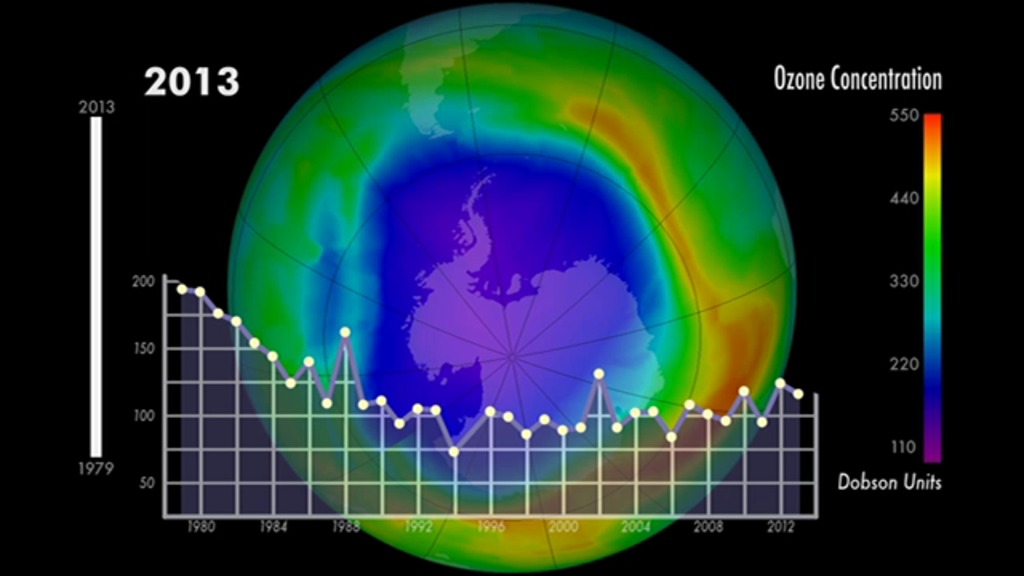A Brief History of Ozone
Ozone is a colorless gas mainly found in Earth’s stratosphere. It forms a protective layer that absorbs harmful ultraviolet light from the sun. In 1985, an extreme depletion of ozone over Antarctica was discovered—the so-called Antarctic ozone hole. It soon became clear that this drop in ozone was caused by man-made chemicals called chlorofluorocarbons (CFCs). To help solve the global depletion of ozone, the international community regulated CFC production and consumption by adopting the Montreal Protocol in 1987. Although this and subsequent actions have now effectively banned CFC production and put the ozone layer on a path to recovery, long-lived CFCs in the atmosphere continue to effect ozone levels to this day. Watch the video to see more than 30 years of changes in ozone concentrations over the Southern Hemisphere.

Explore how Earth’s ozone layer has changed in recent decades.
This visualization shows maps of the lowest concentration of ozone observed each year over Antarctica from 1979 to 2013.

Scientists saw a significant decrease in ozone over Antarctica in 1985, shown above.

The lowest concentration of ozone over Antarctica was observed in 1994, shown above.

This is how the Antarctic ozone hole looked in 2013. Scientists expect it to recover to pre-1980 levels around the year 2070.
For More Information
See NASA.gov
Credits
Please give credit for this item to:
NASA's Goddard Space Flight Center
-
Animator
- Matthew R. Radcliff (USRA)
-
Video editor
- Matthew R. Radcliff (USRA)
-
Producer
- Matthew R. Radcliff (USRA)
-
Scientist
- Paul Newman (NASA/GSFC)
-
Project support
- Aaron E. Lepsch (ADNET Systems, Inc.)
-
Writer
- Kasha Patel (Wyle Information Systems)
Release date
This page was originally published on Tuesday, September 30, 2014.
This page was last updated on Wednesday, May 3, 2023 at 1:50 PM EDT.
